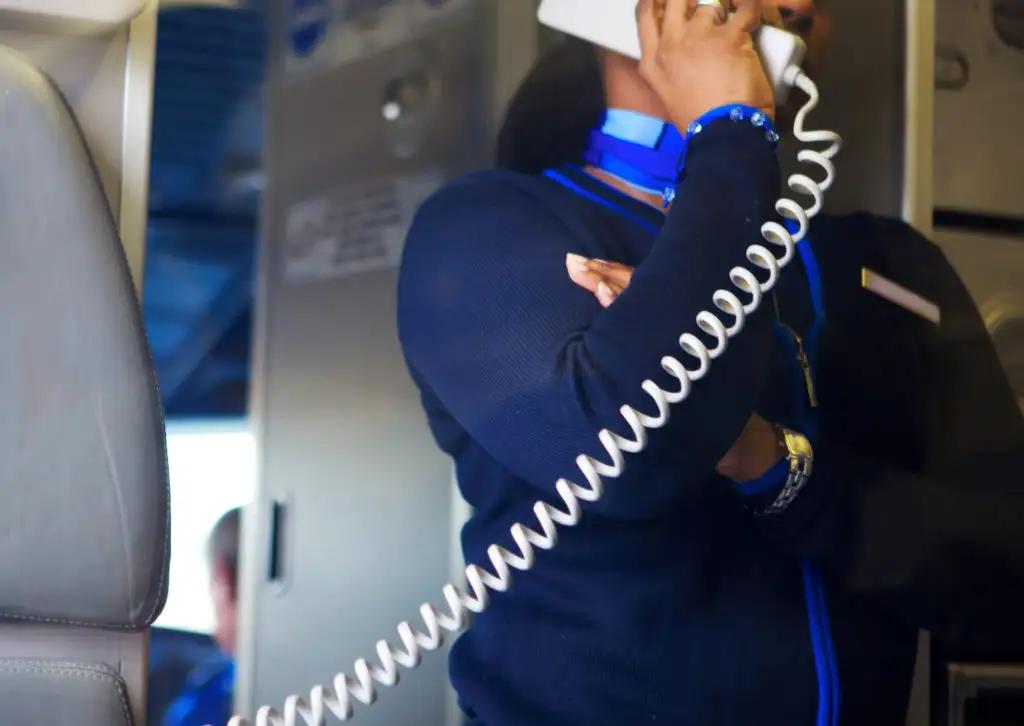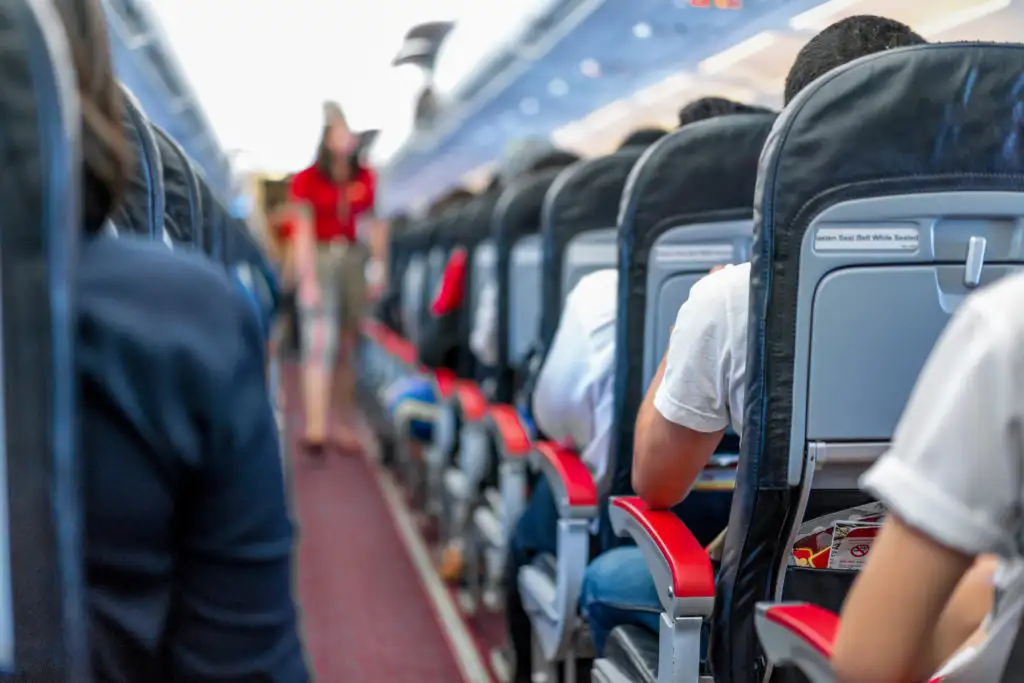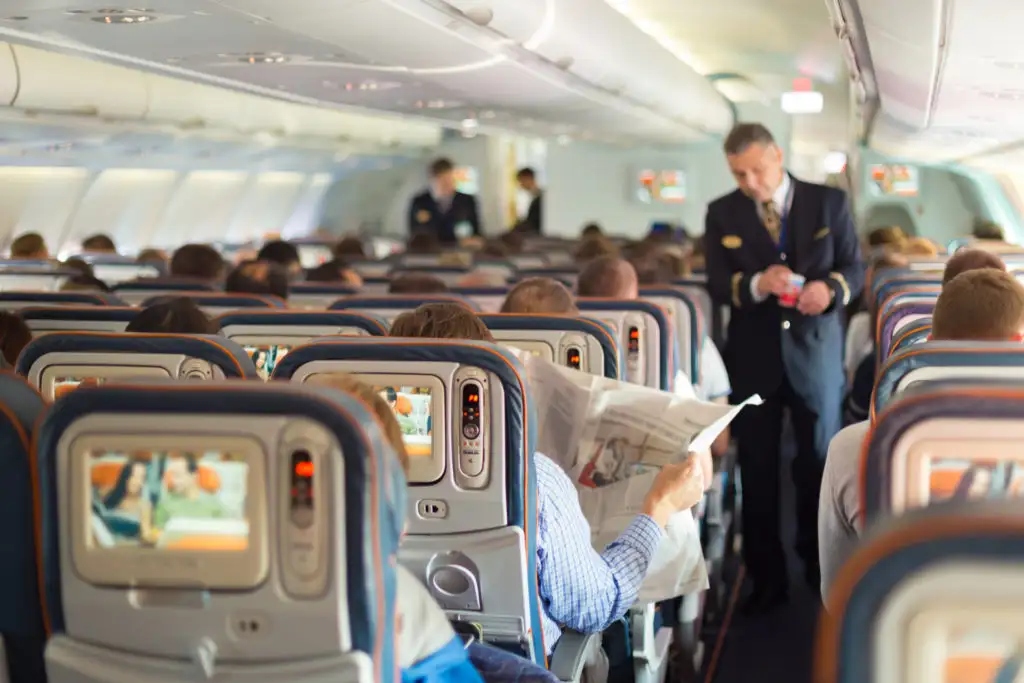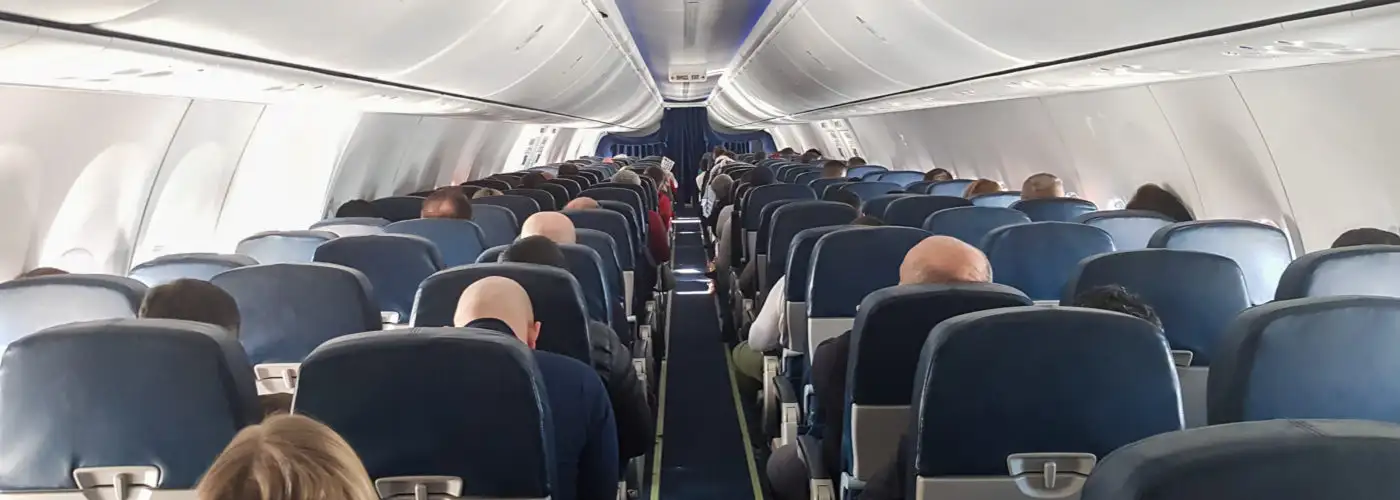The friendly skies don’t seem as friendly these days. Reports of aggressive, violent passengers are a frequent occurrence, with stories like a woman who knocked out a flight attendant’s two front teeth over being asked to put on her seatbelt or a man who had to be restrained after he tried to open the plane’s exit door.
In 2021, the Federal Aviation Administration (FAA) investigated more than 1,000 reports of unruly passengers, a dramatic increase from years past. The FAA also instituted fines of $50,000 as a deterrent for bad behavior on airplanes along with removal of privileges like TSA PreCheck.
The possibility of encountering a violent seatmate is still low. “I’d say chances are very slim that you’ll be involved in an altercation on an airplane,” Brett Snyder of airplane industry blog Cranky Flier says. But how could you help defuse things if another passenger is irate? What should you do if you yourself are involved in a tense situation? Here are a few tips on how to handle an airplane altercation.
What to Do if a Flight Attendant Is Being Harassed

Brenda Orelus has noticed a change for the worse during her work as a professional flight attendant over the past two years. “We are a punching bag. It’s en vogue right now to openly disrespect flight attendants,” the founder of aviation social club Krew Konnect tells SmarterTravel. Orelus has even had her own scare, as a group of passengers attempted to beat her up during a layover in Vegas after misbehaving on the plane.
If you ever see a passenger threatening or being rude to a flight attendant, Orelus says that your voice can be a huge help. “When they are in that fit of air rage, anything that the flight attendant does is only going to further antagonize them,” she says. “[If] the passenger seated next to them or around them calls out the behavior, they understand that it’s shameful and it’s not going to be tolerated. When everyone is silent, it’s almost like everyone is agreeing with them and they continue to have that outrageous bad behavior.”
All it can take is another passenger speaking out to the aggressor early on during an abusive situation, saying something like ‘Hey, don’t do that, that’s not cool, she’s just doing her job, why are you yelling?’ and then that can defuse the situation before it gets worse, she says. But many times, people don’t speak out.
“It never happens because everyone is usually just waiting for the flight attendant to handle it. But there is only so much they can do because that person is actively looking to take their aggression out on us for whatever reason,” Orelus says.
She thinks that there are misconceptions about the job, and that the public should understand that FAA licensing requires flight attendants to ask passengers to follow the safety protocol.
“People don’t realize that, for example, when a flight attendant asks you to put your bags under the seat in front of you, and they wait for you to do it before they walk away, they are not being like ‘Oh, I’m the boss here.’ It’s because we don’t know if you are FAA (Federal Aviation Administration) or not. If we don’t do our safety checks, we incur a personal fine of $10,000. There needs to be better education about why flight attendants do the things they do,” she says.
What to Do if a Fellow Passenger Is Being Harassed

If you see a fight in the seat row next to you or at your gate, look to get an authority figure involved.
“The general advice airlines offer is to seek the help of a crew member, or to ask someone nearby to seek assistance for you. I would think the same advice would apply in an airport—see if there’s someone ‘official’ nearby who can help diffuse the situation or call for more official help,” says Harriet Baskas, who runs the website StuckatTheAirport.com. “Keep in mind that for quite a while now, TSA and Federal Air Marshals have been offering self-defense training classes to airline employees and a good number of them have taken the courses and are likely better at diffusing situations than many of us.”
There are simple ways that bystanders can help in a verbal harassment situation, however. Nonprofit organization Right To Be offers free public training classes on how to respond to and intervene in harassment so you’ll know what to do in the heat of the moment. Leah Pusateri, a training manager at Right To Be teaches the “Five D’s” of bystander intervention: Distract, Delegate, Document, Delay, and Direct.
Many of these methods are indirect, like creating a distraction to break the tension and allow a victim to extricate themselves from a verbal fight. Or delegating someone around you to get the flight attendant while you ask a victim if they need help or while you document the altercation with a phone video (to share with the victim, not to post for clout on your own social media channels).
If you are going to directly intervene, Pusateri says it’s best to simply support the victim. “It’s not starting a fight with someone who is being aggressive to try to change their mind. The key is supporting someone who is being harmed,” she says. “[Say] what you are doing is not ok, you need to stop—a clear boundary set. Turn to the person being harmed, and say ‘What can I do to support you now?'”
What to Do if You Are Being Targeted in an Airplane Altercation

The same rules are helpful if you are the one that is dealing with a rude or aggressive fellow passenger. Pusateri suggests using what she calls “assertive communication.” That means setting your own boundaries, and then getting help from airline authorities or travelers around you.
You could tell the other person something like, “I’m going to ask you right now to take five steps back, you are making me deeply uncomfortable.” Pusateri says: “We call that reclaiming your space, knowing that it is ok to tell someone that what you are doing isn’t ok and that you want that behavior to change. The next thing we say here is asking for what you need, getting the attention of other people, saying, ‘What this person is doing right now is really violating my boundaries.'”
Right To Be also offers resilience training on how to respond to harassment. “For marginalized, women, folks of color, LGBTQIA folks, folks with different ability, they experience harassment and disrespect more,” Pusateri says. “If you are a person of color or a woman and you are in three different airports in one day, how many instances of harassment or disrespect are you going to experience? Sometimes it can be in the tens or twenties. What is the way that you are taking care of yourself in between these moments? Is it that you have someone you call, is it that you have a group text that works for you? Is it that you put your headphones on and have music to zone out?”
“When we tell people how to respond for themselves, it’s that assertiveness, reclaiming your space, asking for help when you need it, calling in others you need to help support you, and finding some ways to really practice some resilience, especially if it’s multiple instances,” she says.
You Might Also Like:
• The Most Expensive Airports in the U.S. To Fly From• Which US Airline’s Basic Economy Fare is the Best?
• 10 Ways to Speed Through Airport Security
• Southwest Ends Free Checked Bags for All
• The Best Ways to Kill Time at the Airport
We hand-pick everything we recommend and select items through testing and reviews. Some products are sent to us free of charge with no incentive to offer a favorable review. We offer our unbiased opinions and do not accept compensation to review products. All items are in stock and prices are accurate at the time of publication. If you buy something through our links, we may earn a commission.
Related
Top Fares From Columbus, OH
Today's Top Travel Deals
Brought to you by ShermansTravel
Shop and Save with Country Inns...
Patricia Magaña
 Hotel & Lodging Deals
Hotel & Lodging Deals
$229 -- Chicago: Discounted Rates and...
Francesca Miele
 Hotel & Lodging Deals
$229+
Hotel & Lodging Deals
$229+
$188 -- Honolulu: Save on Oceanview...
Abigail Lamay
 Hotel & Lodging Deals
$188+
Hotel & Lodging Deals
$188+




